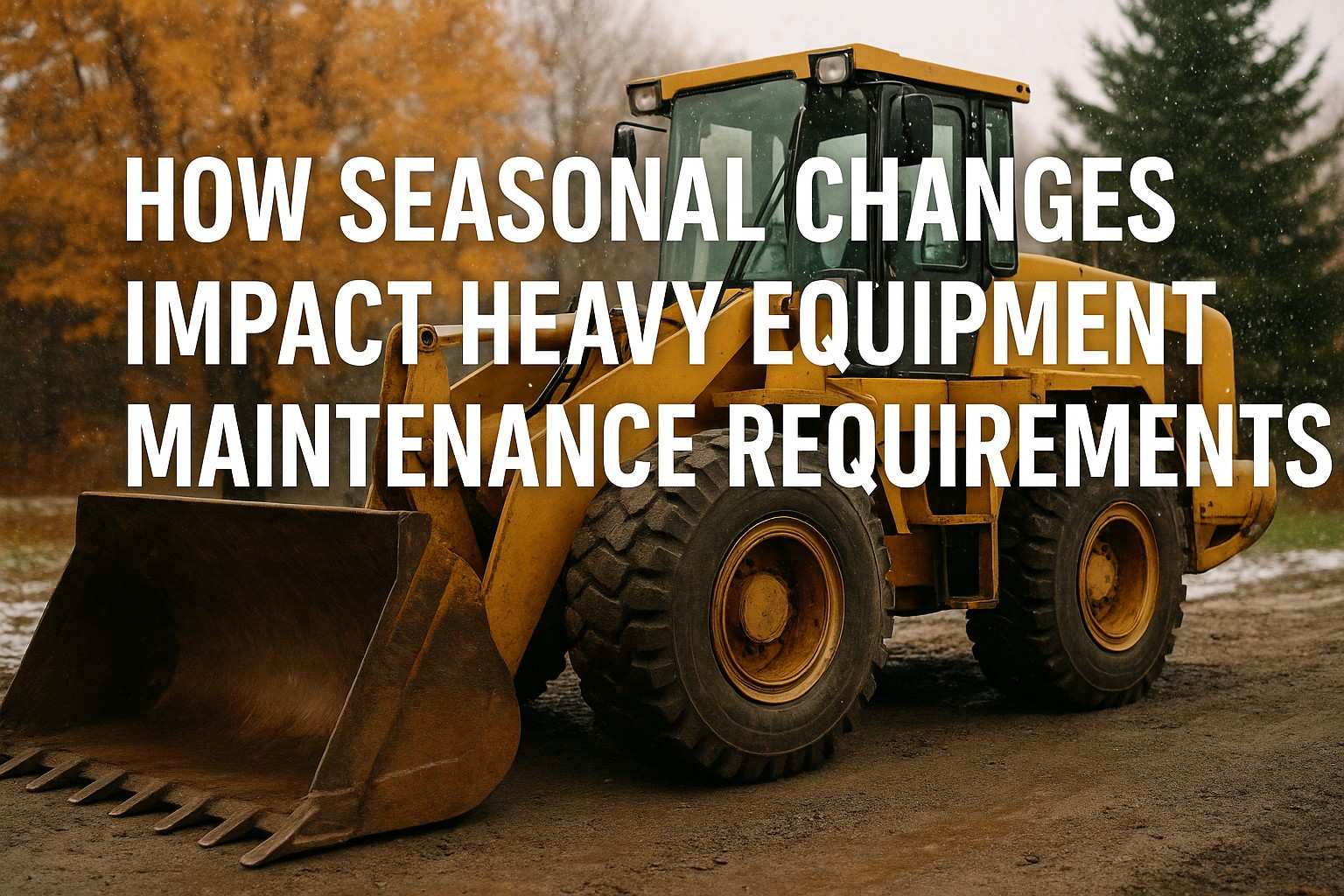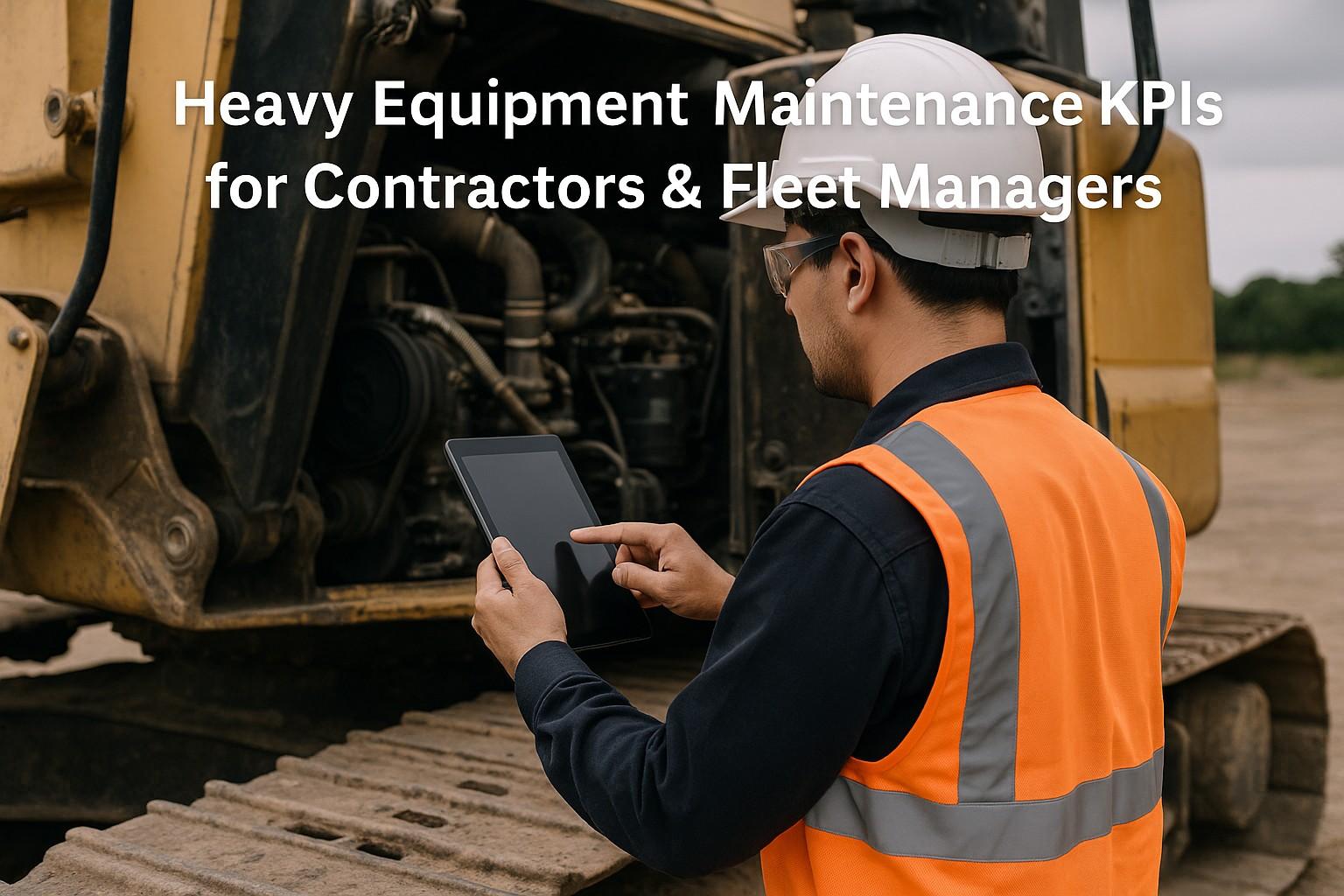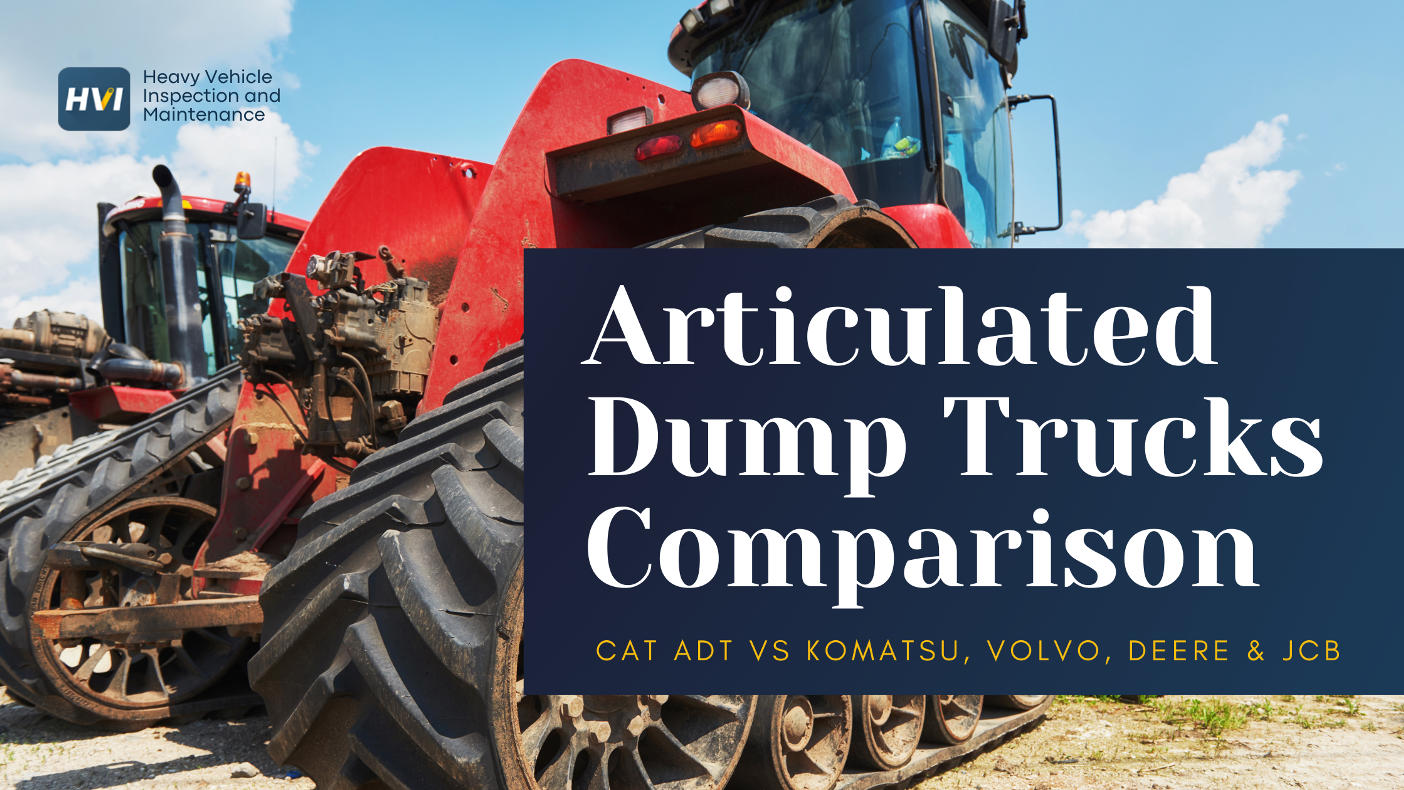Effective maintenance planning is crucial for ensuring fleet efficiency, reducing downtime, and maximizing equipment lifespan. With the Caterpillar-HVI integration, fleet managers can automate critical aspects of maintenance, from scheduling services to managing spare parts inventory. But how can you measure the success of these automated processes? The answer lies in tracking the right Key Performance Indicators (KPIs).
Note: Join our latest webinar " Caterpillar - HVI Integration: Modernizing Equipment Operations and Extending Equipment Life" to learn how integrating real-time data from Caterpillar machines with the HVI app is modernizing equipment operations in the fleet and construction industry. Don't miss out on this opportunity! Watch recording.
KPIs help quantify the improvements made by the Caterpillar-HVI integration, giving you valuable insights into the efficiency of your fleet management. Below are the most important KPIs to track when automating your maintenance planning.
1. On-Time Maintenance Rate
The on-time maintenance rate measures the percentage of scheduled maintenance tasks completed within the designated timeframe. Timely maintenance prevents breakdowns and ensures equipment runs smoothly, reducing costly downtime.
Formula:
On-Time Maintenance Rate = (Number of On-Time Maintenance Tasks / Total Maintenance Tasks) × 100
Example:
If you schedule 100 maintenance tasks, and 90 of them are completed on time, your on-time maintenance rate would be 90%. The Caterpillar-HVI integration, which automates scheduling and alerts, can help push this rate closer to 100%.
Why It’s Important:
A high on-time maintenance rate ensures your equipment stays in optimal condition, avoiding unexpected downtime and repairs.
How Caterpillar-HVI Helps:
By automating maintenance schedules based on real-time engine hour data, the HVI system ensures that maintenance is performed at the right intervals, dramatically improving this KPI.
2. Equipment Uptime
Equipment uptime is one of the most critical KPIs to monitor when managing a fleet. It measures how much time your equipment is operational and available for use, versus being out of service due to repairs or maintenance.
Formula:
Equipment Uptime = (Operational Time / Total Available Time) × 100
Example:
If a machine is operational for 20 hours a day out of a possible 24, your uptime would be (20/24) × 100 = 83.3%. With proactive maintenance and real-time alerts provided by the Caterpillar-HVI integration, you can aim to increase uptime to over 95%.
Why It’s Important:
Higher equipment uptime means better productivity and fewer delays in operations, leading to improved project timelines and cost savings.
How Caterpillar-HVI Helps:
By ensuring that maintenance is performed on time and using predictive maintenance features like DTC codes, the HVI system helps maximize equipment uptime, reducing unexpected failures.
3. Mean Time Between Failures (MTBF)
MTBF measures the average time between equipment failures. A longer MTBF indicates better equipment reliability, which is a direct result of proper maintenance practices.
Formula:
MTBF = Total Operating Time / Number of Failures
Example:
If a machine operates for 500 hours between failures, its MTBF is 500 hours. With automated maintenance scheduling and real-time diagnostics through the Caterpillar-HVI integration, you can increase your MTBF by ensuring regular and timely service, thereby reducing unexpected breakdowns.
Why It’s Important:
A higher MTBF reflects the health and reliability of your equipment, reducing the frequency of unexpected repairs and associated costs.
How Caterpillar-HVI Helps:
The HVI system tracks machine usage and schedules maintenance based on real-time engine hours, preventing wear and tear, which in turn extends the time between failures.
4. Downtime Due to Maintenance
This KPI tracks the total downtime your equipment experiences due to maintenance. While some downtime is inevitable, the goal is to minimize it through efficient maintenance planning and execution.
Formula:
Downtime Due to Maintenance = (Total Maintenance Downtime / Total Available Time) × 100
Example:
If your fleet experiences 8 hours of maintenance downtime per 100 hours of operation, your downtime due to maintenance would be 8%. With automated maintenance planning through the Caterpillar-HVI integration, this percentage can be reduced by ensuring that maintenance is performed quickly and efficiently, minimizing the time equipment is out of service.
Why It’s Important:
Reducing downtime improves overall productivity and project timelines, helping you meet deadlines and minimize operational costs.
How Caterpillar-HVI Helps:
With real-time parts ordering and scheduling, the Caterpillar-HVI integration minimizes downtime by ensuring that services are performed efficiently and without delays due to missing parts or manual scheduling issues.
5. Maintenance Cost per Operating Hour
This KPI tracks how much it costs to maintain your equipment per hour of operation. Lowering this cost while maintaining equipment reliability is key to optimizing your overall fleet management strategy.
Formula:
Maintenance Cost per Operating Hour = Total Maintenance Costs / Total Operating Hours
Example:
If your total maintenance costs for a machine are $10,000, and it operates for 1,000 hours, your maintenance cost per hour is $10. Through Caterpillar-HVI’s automated processes that reduce breakdowns and optimize spare parts management, you can bring this cost down to $8 per hour, yielding significant savings.
Why It’s Important:
Reducing maintenance costs while maintaining reliability directly impacts your bottom line, making your operations more cost-efficient.
How Caterpillar-HVI Helps:
Automating service schedules, parts ordering, and predictive maintenance helps lower maintenance costs by reducing breakdowns and ensuring that repairs are performed proactively rather than reactively.
6. Spare Parts Availability Rate
This KPI measures the availability of the required spare parts when maintenance is due. Ensuring that spare parts are always on hand eliminates delays in performing scheduled services.
Formula:
Spare Parts Availability Rate = (Times Parts Are Available for Scheduled Services / Total Number of Scheduled Services) × 100
Example:
If your spare parts availability rate is 85%, meaning parts are only available for 85 out of 100 scheduled services, you may experience delays. With the Caterpillar-HVI integration, which automates inventory checks and spare parts ordering, you can push this rate closer to 100%.
Why It’s Important:
High spare parts availability means fewer service delays, reducing downtime and ensuring timely maintenance.
How Caterpillar-HVI Helps:
By automatically checking parts inventory when work orders are generated and placing orders with your Caterpillar dealership when parts are missing, the HVI system helps keep your spare parts availability rate high.
7. Return on Investment (ROI) in Maintenance Automation
This KPI measures the financial benefits of using automated maintenance processes, such as the Caterpillar-HVI integration, versus manual tracking and scheduling.
Formula:
ROI = (Cost Savings from Reduced Downtime and Maintenance Costs / Investment in Maintenance Automation) × 100
Example:
If automating your maintenance planning saves you $50,000 annually and the cost of implementing the Caterpillar-HVI integration is $20,000, your ROI would be (50,000/20,000) × 100 = 250%.
Why It’s Important:
High ROI means that the investment in automated maintenance planning is paying off in terms of cost savings and operational efficiency.
How Caterpillar-HVI Helps:
The Caterpillar-HVI integration reduces downtime, optimizes maintenance costs, and ensures timely service, all of which contribute to a high return on investment.
Conclusion: Optimize Your Maintenance with Caterpillar-HVI Integration
By tracking and optimizing these KPIs, you can measure the effectiveness of your maintenance processes and continuously improve them. The Caterpillar-HVI integration automates critical aspects of fleet management, from scheduling services to managing spare parts, helping you improve KPIs like equipment uptime, maintenance cost per hour, and on-time maintenance rate.
Ready to track your KPIs and optimize fleet maintenance? Sign up for a free trial of the HVI App today to experience the benefits of automated maintenance planning firsthand.
Start Your Free Trial and take your maintenance planning to the next level!



